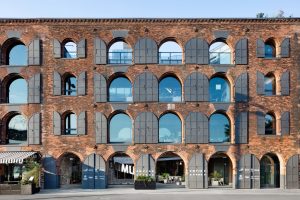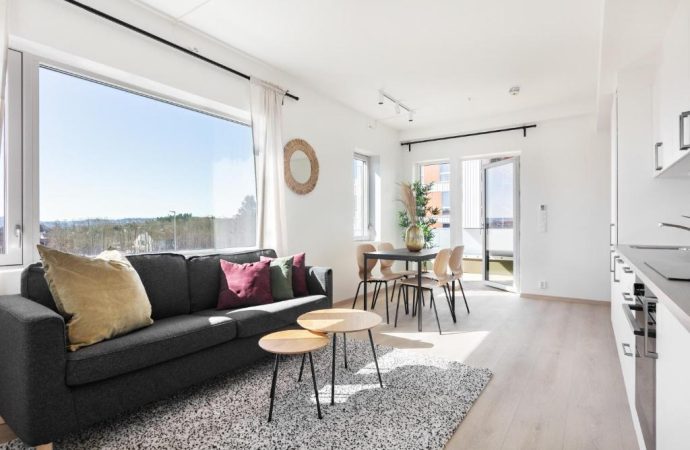Introduction Inclusivity is not just an aspiration; it’s a fundamental right. Real estate is playing a pivotal role in promoting accessible design for inclusive living. This article delves into how the real estate industry is pushing for accessible design, fostering a more inclusive future in housing. We will explore the principles of accessible architecture, the
Introduction
Inclusivity is not just an aspiration; it’s a fundamental right. Real estate is playing a pivotal role in promoting accessible design for inclusive living. This article delves into how the real estate industry is pushing for accessible design, fostering a more inclusive future in housing. We will explore the principles of accessible architecture, the influence of adaptive technologies, and the concept of universal housing. Discover how these factors are shaping a world where everyone can call a place “home.”
The Empowering Force of Inclusive Design
Inclusive design is all about creating spaces, buildings, and communities that are welcoming and accessible to all, regardless of age, ability, or background. In the real estate arena, it’s about ensuring that housing is not just a place to reside but a place to thrive.
The Three Pillars of Inclusive Real Estate
1. Accessible Architecture
Accessible architecture forms the bedrock of inclusive design. It transcends basic accommodations like ramps and wider doorways, focusing on thoughtful features like tactile signage for the visually impaired and well-placed handrails for those with mobility challenges.
2. The Revolution of Adaptive Technologies
Adaptive technologies are at the forefront of inclusive design. From voice-activated controls that enhance accessibility to cutting-edge smart home systems catering to diverse needs, technology is transforming the landscape of real estate, making it more inclusive and accommodating.
3. Universal Housing
Universal housing is an emerging concept that’s gaining momentum. It revolves around creating homes that are adaptable and flexible, capable of evolving with the changing needs of their occupants. This approach is particularly valuable for individuals who face age-related challenges and for multigenerational households.
Insights from Real Estate Visionaries
We reached out to Daniel Greene, a prominent real estate developer and advocate of inclusive design:
“Inclusive design isn’t just an option; it’s an ethical responsibility. Real estate plays a vital role in creating environments that enable everyone to live life to the fullest. It goes beyond compliance with regulations; it’s about fostering vibrant, diverse communities where every individual can flourish.”
Real-Life Impact
1. Multigenerational Housing
The surge in multigenerational housing is a testament to the far-reaching impact of inclusive design. Homes designed to accommodate individuals of all ages ensure that families can live together harmoniously, strengthening family bonds and unity.
2. Co-Living Spaces
Co-living spaces exemplify inclusivity. They offer fully furnished apartments and shared areas designed for convenience and accessibility, ensuring a harmonious living experience for residents with diverse needs and backgrounds.
3. Adaptive Reuse Projects
Adaptive reuse projects are breathing new life into old buildings, transforming them into accessible and vibrant community spaces. These projects skillfully blend historic preservation with modern amenities, creating spaces that celebrate inclusivity.

Image by: https://architizer.com/
Empowering Communities
Inclusive design doesn’t just empower individuals; it empowers entire communities. Real estate projects that embrace these principles foster vibrant and diverse neighborhoods, ensuring that everyone has the opportunity to participate fully in the community, thereby creating a stronger sense of belonging.
A Future of Inclusive Living
Inclusive design in real estate is not just a trend; it’s a commitment to creating welcoming and accessible living spaces. As architects, developers, and communities continue to champion these principles, our cities and homes will evolve to become more inclusive, creating a future where everyone is welcome, valued, and able to thrive. Real estate is not just about constructing structures; it’s about building a world where everyone has equal access to the comforts of home.
Key Points on Inclusive Design in Real Estate:
| Key Point | Description |
|---|---|
| Accessible Architecture | Accessible architecture emphasizes thoughtful features for various abilities, such as tactile signage and well-placed handrails. |
| The Revolution of Adaptive Technologies | Innovative technologies, including voice-activated controls and advanced home systems, are driving accessibility in real estate. |
| Universal Housing | Universal housing creates adaptable homes capable of evolving with occupants’ changing needs, benefiting those with age-related challenges and multigenerational households. |
| Multigenerational Housing | Homes designed to accommodate individuals of all ages ensure harmonious coexistence of multigenerational families. |
| Co-Living Spaces | Co-living spaces provide fully furnished apartments and shared areas designed for convenience and accessibility for diverse residents. |
| Adaptive Reuse Projects | Adaptive reuse projects transform old buildings into accessible community spaces, merging historic preservation with modern amenities. |
| Empowering Communities | Inclusive design empowers entire communities, fostering vibrant and diverse neighborhoods that enable full participation for everyone. |
Conclusion
Inclusive design in real estate is not a passing trend; it’s a profound commitment to creating living spaces where everyone’s needs are met. Accessible architecture, adaptive technologies, and universal housing are reshaping the industry, making it more accessible and welcoming to all. Multigenerational housing, co-living spaces, and adaptive reuse projects are pushing the boundaries of inclusivity, creating harmonious living experiences for diverse residents and repurposing old buildings into vibrant community spaces. Inclusive design doesn’t just empower individuals; it empowers entire communities, fostering vibrant and diverse neighborhoods where everyone can fully participate. The future is a place where everyone is welcome, valued, and able to thrive, regardless of their abilities or background. Real estate isn’t just about constructing structures; it’s about creating a world where everyone has equal access to the comforts of home.























Leave a Comment
Your email address will not be published. Required fields are marked with *